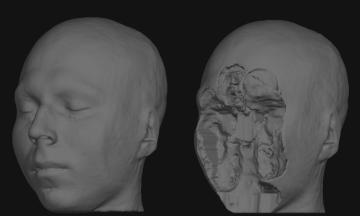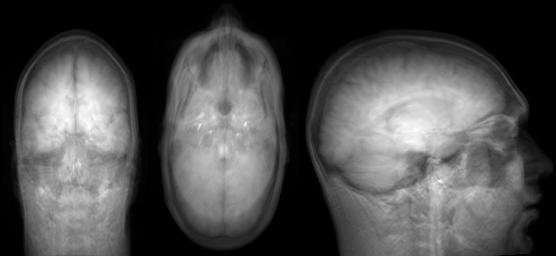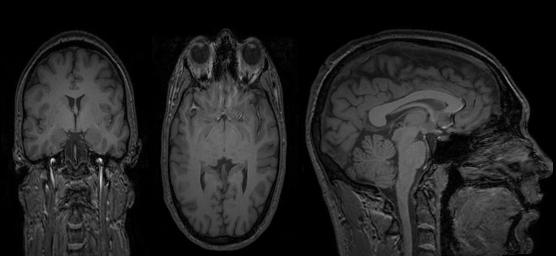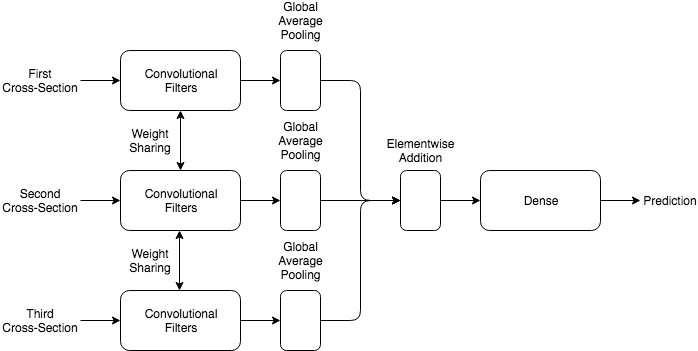MRI Deface Detector
The de-identification of Brain MRI (Magnetic Resonance Imaging) scans, which is an important ethical step while publicly sharing datasets, is called defacing. Defacing involves removing or masking the part of the image corresponding to the face, while simultaneously ensuring brain data is not lost in the process.
This javascript tool intends to serve a trained deep learning model to do the job of detecting deface in an MRI scan quickly and efficiently. The tool will be easy to integrate into automatic validators such as the BIDS Validator.
The deep learning model consists of only 34,937 parameters, hence taking a mere 156 KB overhead on storage, while producing lighting fast predictions on the browser.
This tool can be used in the following ways:
- Installed and used as a node package through npm
- Run on the browser directly
- Build custom model and run your own detector
Quickstart
- Open Google Chrome.
- Go to https://wazeerzulfikar.github.io/mri-deface-detector/ and upload a
NIFTIfile to see results.
Requirements
- Node>=8.9.0
- Python3 (For training custom model)
Install
Install with npm :
$ npm install mri-deface-detector
Basic Usage
const detector = require('mri-deface-detector')
// file passed as an ArrayBuffer
mri_scan = detector.readNifti(file)
// result is a prediction indicating probability of deface
detector.detectDeface(mri_scan)
.then(result => console.log(result))
How to Run the Detector on your Browser
- Clone the github repository
cdinto the cloned repository$ npm install$ npm run watch- Upload a
NIFTIfile to see results
Build your own Detector
This requires two steps:
- Train and Export the Deep Learning Model
- Using Custom Model in the Deface Detector Tool
Training the Deep Learning Model
Dataset Preparation
The existing model has been trained on the IXI-Dataset, which would formulate the Original dataset. To create the defaced dataset, a defacing tool such as pydeface was used to create the corresponding defaced dataset. Another popular defacing tool which can be used to add variabality is mri_deface.
The Dataset should be structured in the following way :
Dataset
│
└───Original
│ │ image1.nii.gz
│ │ image2.nii.gz
│ │ ...
│
└───Defaced
│ image3.nii.gz
│ image4.nii.gz
│ ...
The three-dimensional MRI scan is preprocessed to obtain 3 two-dimensional cross-sections using one of mean or slice methods. Examples for each of the two are given below.
Mean
Arithmetic mean along each of the dimensions
Slice
Center slice along each of the dimensions
Note : The existing model uses slice preprocessing. This is provides a faster preprocessing step and simultaneously achieves a good sensitivity and specificity.
On the other hand, the mean preprocessing blurs out the intricate details of the neural anatomy, and thus will potentially allow the model to give emphasis to the actual shape of the structure, which is essential for deface detection.
For faster experimentation, the mri data is first stored as numpy(npz) files.
To do this run :
python load_dataset.py --load_path path/to/dataset1 path/to/dataset2 .. \
--save_path path/to/save/npz/files \
--preprocess [Optional] mean/slice
As this step takes substantial time due to big sizes of MRI scans, the script allows you keep appending more data as acquired to the numpy storage by just running load_dataset using the same save_path repeatedly.
Train the Model
To train the model :
python detector.py --load_path path/to/npz/files \
--augment_images False \
--export_js False
Export to JS
Set the --export_js flag to True for automatic conversion of the best model to a TensorFlowJS usable form.
Augmentations
Set the --augment_images to True to augment images, while training, using the transformations below:
- Gaussian Blur
- Contrast Normalization
- Multiply
- Flips
- Rotations
Model Architecture
The figure below represents the simplified model architecture:
Note : The weight sharing and elementwise addition features were used specifically to ensure the independence of model performance on the order in which the cross-sections are passed to the model, thus making it more robust.
The model only contains 34,937 parameters making the saved keras model only 495 KB. The size is further optimized to 156 KB while converting to the JS form.
Metrics
In concordance to the neuroimaging community, the trained model is validated using sensitivity and specificity metrics, where :
Sensitivity = TP / (TP + FN)
Specificity = TN / (TN + FP)
Note : The existing model has a sensitivity = 0.9898 and specificity = 0.9849 on the Test Set.
Using the Custom Model in the Deface Detector Tool
The model trained using detector.py (with export_js=True) will be stored in /models as model_js
const detector = require('mri-deface-detector')
var model = detector.loadModel('path/to/model_js/model.json')
// file passed as an ArrayBuffer
mri_scan = detector.readNifti(file)
detector.detectDefaceCustom(model, mri_scan, preprocess_method, input_size, callback)
.then(result => console.log(result))
Next Steps
Fix the NIFTI file read, which is corrupted right now.Implement mean preprocessing in javascript detector tool.Make integratable into other validators.- Add unit tests



